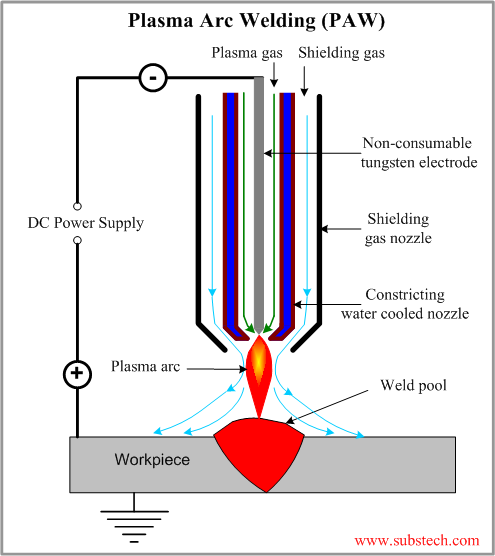Main page
About us
Sliding Bearings Consulting
Advertising Opportunities

to Metals
to Metal joining technologies (welding, brazing, soldering)
Plasma Arc Welding (PAW)
Dr. Dmitri Kopeliovich
Plasma Arc Welding is the welding process utilizing heat generated by a constricted arc struck between a tungsten non-consumable electrode and either the work piece (transferred arc process) or water cooled constricting nozzle (non-transferred arc process).
Plasma is a gaseous mixture of positive ions, electrons and neutral gas molecules.
Transferred arc process produces plasma jet of high energy density and may be used for high speed welding and cutting of Ceramics, steels, Aluminum alloys, Copper alloys, Titanium alloys, Nickel alloys.
Non-transferred arc process produces plasma of relatively low energy density. It is used for welding of various metals and for plasma spraying (coating). Since the work piece in non-transferred plasma arc welding is not a part of electric circuit, the plasma arc torch may move from one work piece to other without extinguishing the arc.

Advantages of Plasma Arc Welding (PAW):
- Requires less operator skill due to good tolerance of arc to misalignments;
- High welding rate;
- High penetrating capability (keyhole effect);
Disadvantages of Plasma Arc Welding (PAW):
- Expensive equipment;
- High distortions and wide welds as a result of high heat input (in transferred arc process).
Related internal links


